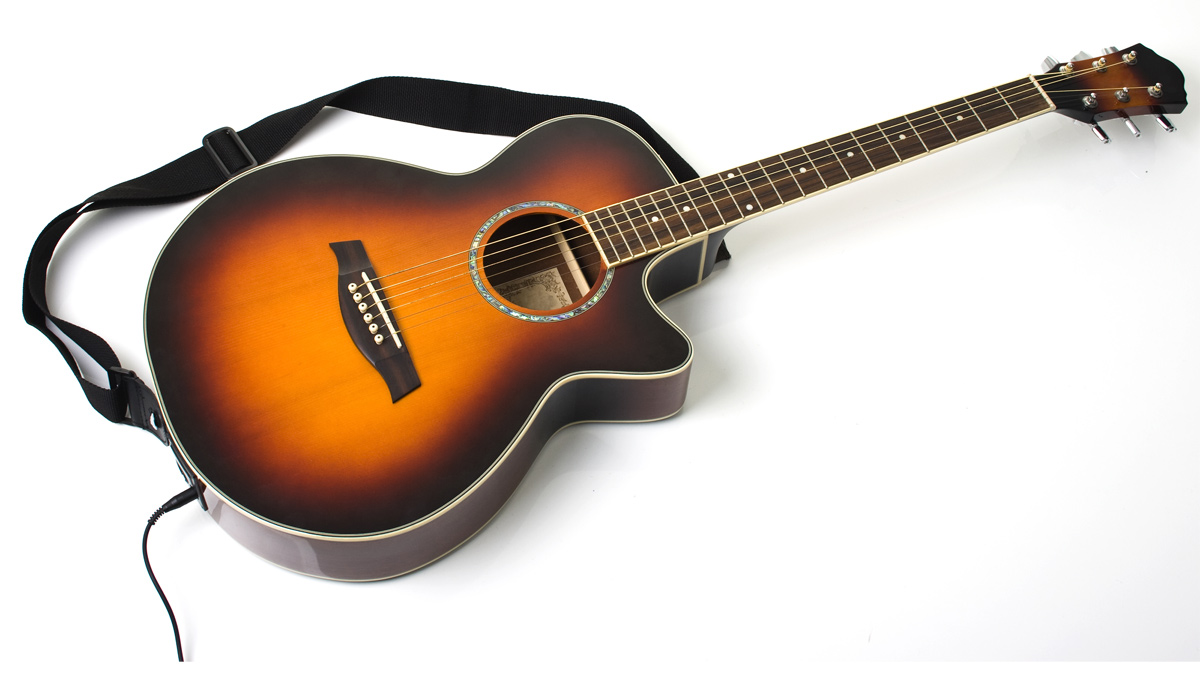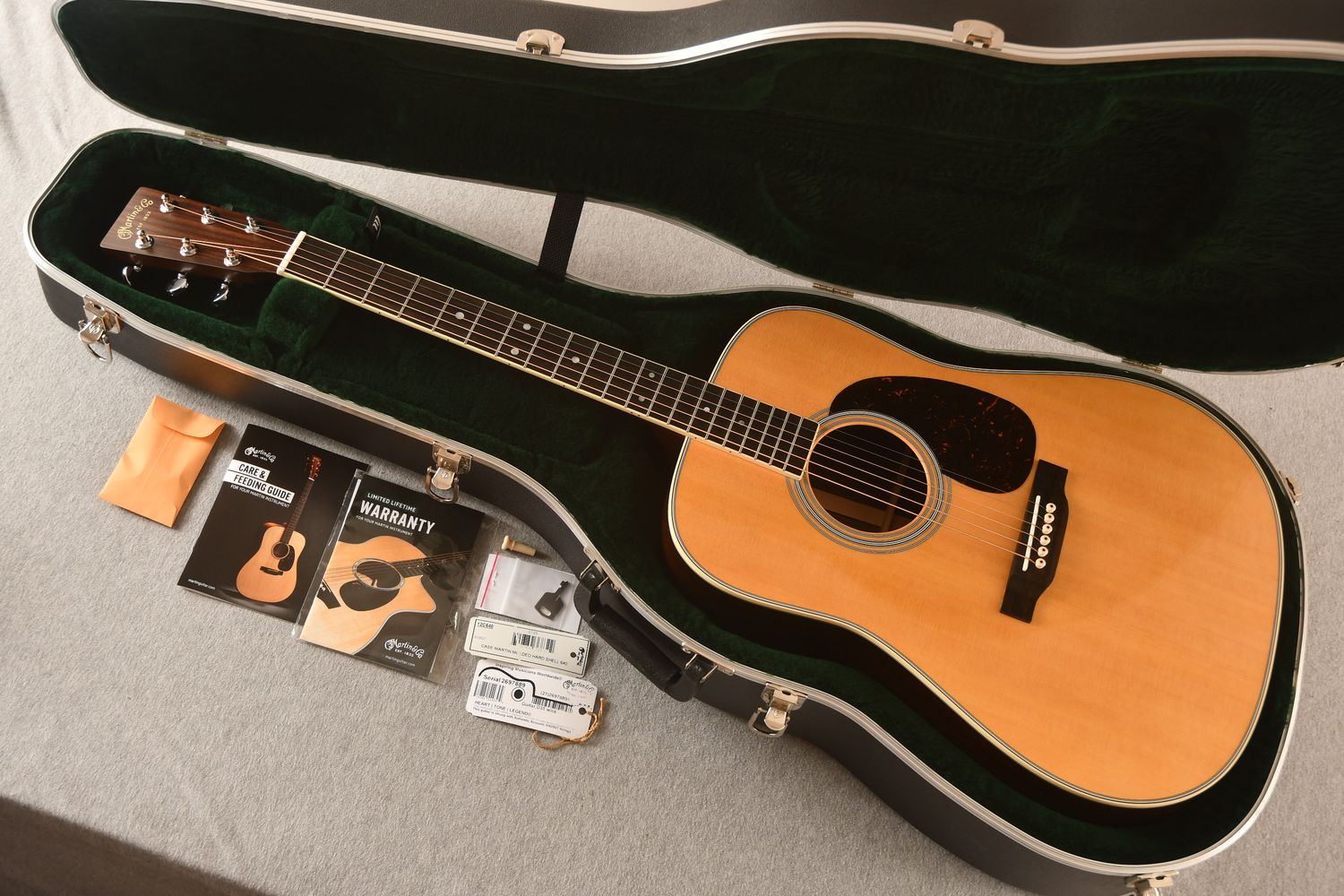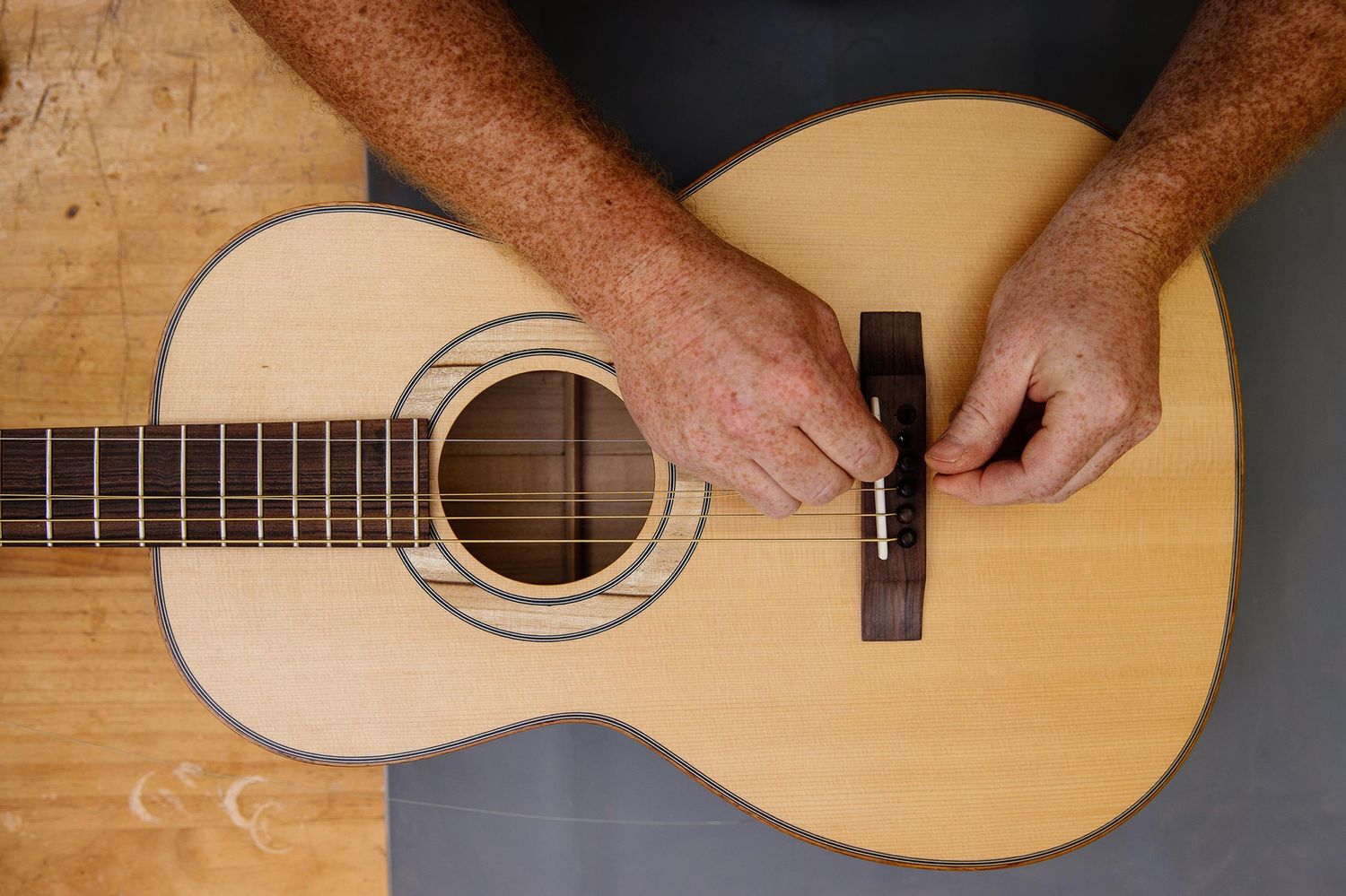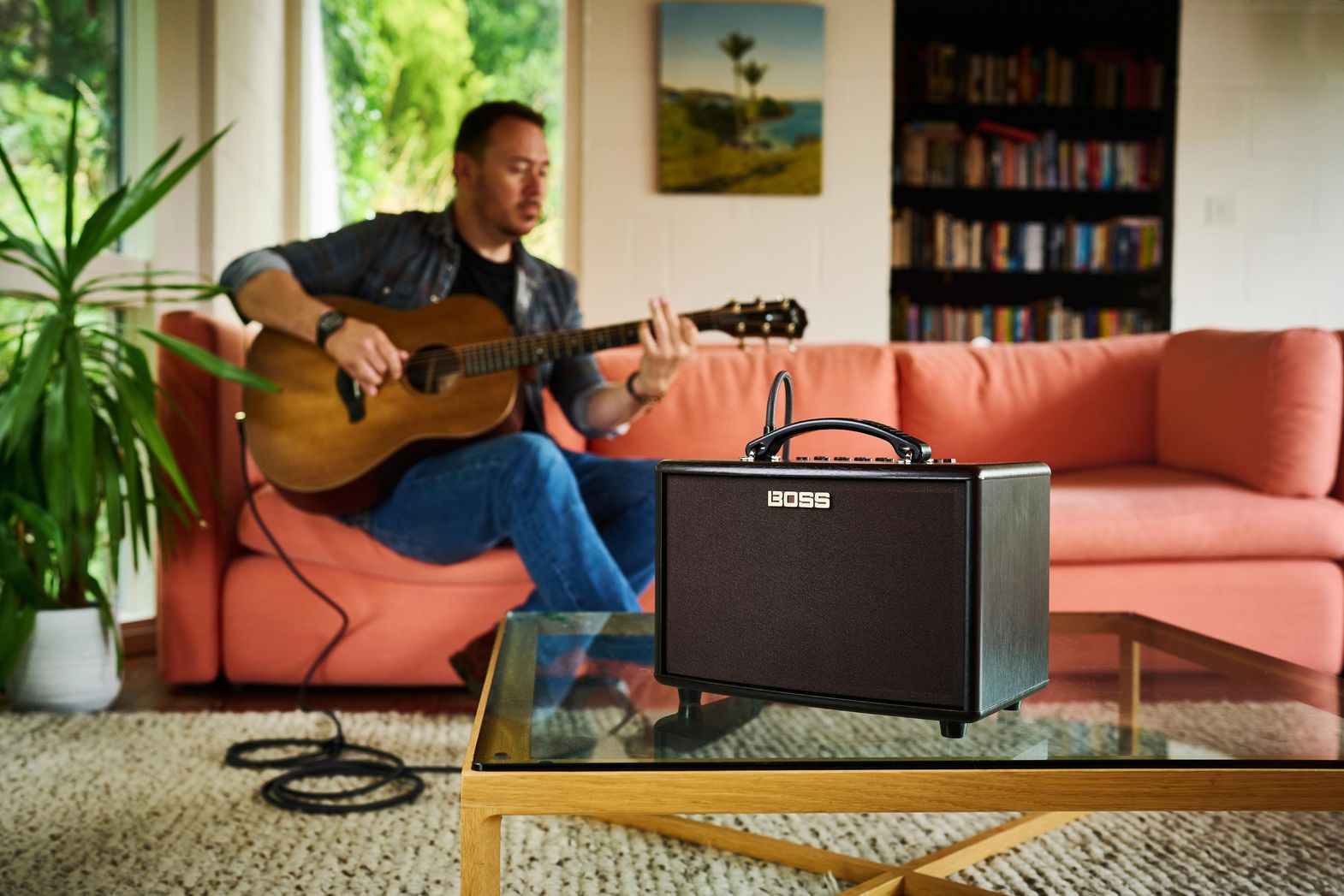Home>Production & Technology>Acoustic>At What Humidity Should Acoustic Guitars Be Kept
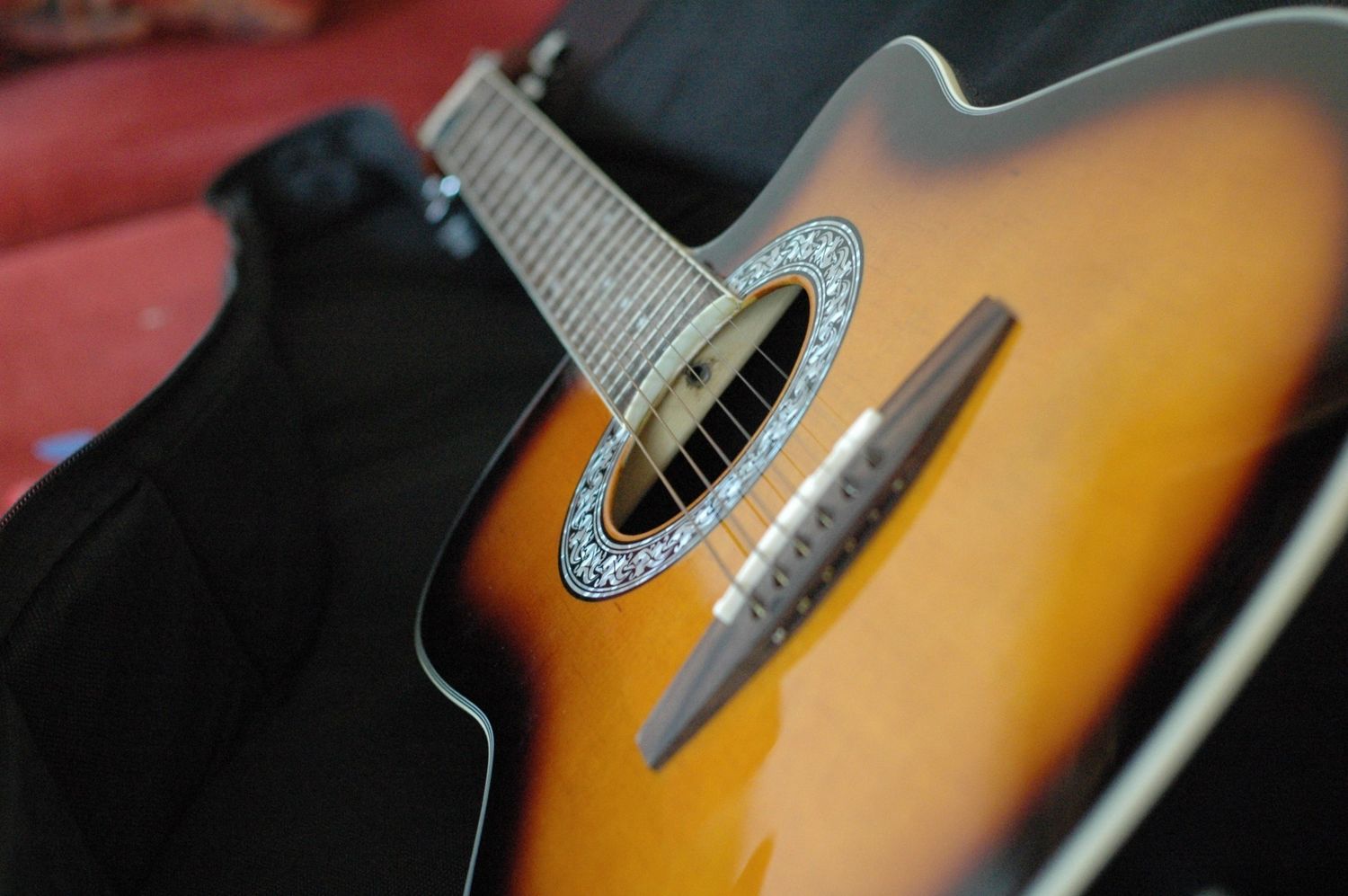

Acoustic
At What Humidity Should Acoustic Guitars Be Kept
Published: March 11, 2024
Learn about the ideal humidity levels for storing acoustic guitars to prevent damage and maintain their quality. Find out how to protect your instrument.
(Many of the links in this article redirect to a specific reviewed product. Your purchase of these products through affiliate links helps to generate commission for AudioLover.com, at no extra cost. Learn more)
Table of Contents
Introduction
Acoustic guitars are not just musical instruments; they are works of art that produce soul-stirring melodies and resonate with the emotions of the players. However, to maintain their pristine condition and ensure optimal performance, it is crucial to understand the impact of humidity on acoustic guitars. Humidity, the amount of moisture present in the air, plays a pivotal role in the well-being of these instruments.
In this comprehensive guide, we will delve into the significance of humidity in preserving the integrity of acoustic guitars. From the ideal humidity levels to the effects of high and low humidity, we will explore the intricate relationship between moisture and the delicate components of these instruments. Furthermore, we will provide practical tips for guitar enthusiasts to maintain the right humidity levels and safeguard their beloved instruments from potential damage.
Join us on this enlightening journey as we uncover the mysteries of humidity and its profound influence on the timeless allure of acoustic guitars. Whether you are a seasoned musician, an aspiring guitarist, or simply an admirer of acoustic music, this exploration will deepen your appreciation for the craftsmanship and care required to preserve the soulful resonance of these remarkable instruments.
The Ideal Humidity for Acoustic Guitars
The ideal humidity for acoustic guitars typically falls within the range of 45% to 55%. This range provides a stable environment that supports the structural integrity and tonal quality of the instrument. When the humidity level is within this optimal range, the guitar's wooden components, such as the soundboard, neck, and fretboard, are less prone to warping, cracking, or swelling.
Maintaining the ideal humidity level is particularly crucial for the soundboard, as it directly influences the guitar's resonance and tone. The soundboard, often crafted from spruce or cedar, is highly responsive to changes in humidity. In a balanced environment, the soundboard can vibrate freely, producing rich and vibrant tones. However, excessive dryness or moisture can compromise the soundboard's flexibility, leading to a dull or distorted sound.
Furthermore, the neck and fretboard of an acoustic guitar are susceptible to changes in humidity. In high humidity conditions, the wood may absorb moisture and swell, causing the neck to bend or the frets to protrude. Conversely, in low humidity, the wood may shrink, potentially leading to fret buzzing and an uneven playing surface.
In addition to the wooden components, the overall stability of the guitar's construction, including the glue joints and bracing, is influenced by humidity. Proper humidity levels help prevent adhesive failure and maintain the structural integrity of the instrument.
To monitor and regulate humidity, guitar enthusiasts can utilize hygrometers, which measure the moisture content in the air. Additionally, humidifiers and dehumidifiers can be employed to adjust the humidity levels within the guitar's storage or display area. By investing in a quality hygrometer and implementing appropriate humidity control measures, guitar owners can safeguard their instruments against the detrimental effects of fluctuating moisture levels.
In essence, maintaining the ideal humidity for acoustic guitars is paramount for preserving their tonal excellence, structural stability, and overall longevity. By nurturing a consistent environment within the recommended humidity range, guitar enthusiasts can ensure that their instruments continue to resonate with captivating melodies and enduring beauty.
Effects of High Humidity on Acoustic Guitars
High humidity can exert detrimental effects on acoustic guitars, posing a significant threat to their structural integrity and tonal quality. When exposed to excessive moisture in the air, the wooden components of the guitar are susceptible to various adverse outcomes:
-
Swelling and Warping: High humidity can cause the wood to absorb moisture, leading to swelling and warping of the guitar's body, neck, and fretboard. This distortion not only compromises the aesthetic appeal of the instrument but also hinders its playability. The once smooth and even surface of the fretboard may become uneven, impeding the guitarist's ability to execute precise and fluid movements across the frets.
-
Fret Buzzing: As the wood swells due to high humidity, the frets may be pushed upward, resulting in fret buzzing. This phenomenon occurs when the strings come into contact with the raised frets, producing an undesirable buzzing sound that detracts from the clarity and resonance of the guitar's notes.
-
Diminished Tone and Resonance: The excessive moisture in high humidity conditions can impede the soundboard's ability to vibrate freely, leading to a dampened and less vibrant tone. The once lively and resonant qualities of the guitar may be compromised, robbing the instrument of its captivating sonic allure.
-
Mold and Mildew Growth: In addition to affecting the wood, high humidity creates a conducive environment for mold and mildew growth. These unsightly and potentially harmful organisms can proliferate on the guitar's surface, compromising its visual appeal and posing health risks to the player.
To mitigate the adverse effects of high humidity, guitar enthusiasts should prioritize humidity control measures, such as utilizing dehumidifiers or air conditioning to regulate the moisture levels in the guitar's storage environment. Additionally, storing the guitar in a hard case with desiccants can help absorb excess moisture and protect the instrument from the damaging impact of high humidity.
By understanding the repercussions of high humidity on acoustic guitars and implementing proactive measures to maintain optimal humidity levels, guitar owners can safeguard their beloved instruments from potential harm and ensure that they continue to resonate with timeless beauty and captivating melodies.
Effects of Low Humidity on Acoustic Guitars
Low humidity can exert detrimental effects on acoustic guitars, posing a significant threat to their structural integrity and tonal quality. When exposed to dry air with low moisture content, the wooden components of the guitar are susceptible to various adverse outcomes:
-
Shrinking and Cracking: Low humidity can cause the wood to lose moisture, leading to shrinking and potential cracking of the guitar's body, neck, and fretboard. The once stable and well-structured components of the instrument may succumb to the stress of dryness, resulting in unsightly and structurally compromising cracks.
-
Fret Sprouting: As the wood shrinks due to low humidity, the fret ends may protrude from the sides of the fretboard. This phenomenon, known as fret sprouting, not only affects the visual appeal of the guitar but also poses a risk of discomfort and potential injury to the guitarist's hands during playing.
-
Diminished Resonance and Tone: The lack of adequate moisture in low humidity conditions can lead to a decrease in the guitar's resonance and tonal richness. The dryness may impede the soundboard's ability to vibrate optimally, resulting in a subdued and lackluster tone that fails to captivate the listener with its inherent warmth and depth.
-
Increased Vulnerability to Damage: In addition to affecting the wood, low humidity can render the guitar more susceptible to physical damage. The dryness may make the wood more brittle and prone to impact-related injuries, increasing the risk of dents, scratches, and other forms of structural harm.
To mitigate the adverse effects of low humidity, guitar enthusiasts should prioritize humidity control measures, such as utilizing room humidifiers or guitar-specific humidification systems to introduce and maintain an optimal level of moisture in the guitar's storage environment. Additionally, storing the guitar in a hard case with a soundhole humidifier or utilizing humidipaks can help counteract the effects of low humidity and preserve the instrument's structural integrity and tonal excellence.
By understanding the repercussions of low humidity on acoustic guitars and implementing proactive measures to maintain optimal humidity levels, guitar owners can safeguard their beloved instruments from potential harm and ensure that they continue to resonate with timeless beauty and captivating melodies.
Tips for Maintaining the Right Humidity for Acoustic Guitars
Maintaining the ideal humidity for acoustic guitars is essential for preserving their structural integrity and tonal excellence. To ensure that these cherished instruments thrive in a conducive environment, guitar enthusiasts can implement the following tips to regulate and maintain the right humidity levels:
-
Utilize a Quality Hygrometer: Investing in a reliable hygrometer is the first step towards effectively monitoring the humidity levels in the guitar's storage or display area. A hygrometer provides accurate readings of the moisture content in the air, enabling guitar owners to make informed decisions regarding humidity control measures.
-
Choose the Right Humidification System: Selecting an appropriate humidification system tailored to the specific needs of acoustic guitars is crucial. Guitar-specific humidifiers, such as soundhole humidifiers or case humidification systems, can effectively introduce and maintain the optimal level of moisture within the guitar's storage environment.
-
Implement Room Humidifiers: In cases where the overall room or storage space is prone to fluctuating humidity levels, utilizing room humidifiers can create a stable and conducive environment for acoustic guitars. By regulating the moisture content in the surrounding air, room humidifiers contribute to the preservation of the instruments' structural stability and tonal quality.
-
Consider Dehumidification Measures: In environments characterized by consistently high humidity, employing dehumidifiers or air conditioning systems can effectively mitigate the adverse effects of excessive moisture on acoustic guitars. By reducing the humidity levels to the optimal range, these measures safeguard the instruments from potential warping, swelling, and other detrimental outcomes associated with high humidity.
-
Store Guitars in Hard Cases with Humidifiers: When not in use, storing acoustic guitars in hard cases equipped with humidifiers or desiccants can provide an additional layer of protection against fluctuating humidity levels. These specialized cases help maintain a stable and controlled microclimate for the instruments, mitigating the risks posed by environmental variations.
-
Regularly Inspect and Adjust Humidity Levels: Consistent monitoring of the humidity levels and periodic adjustments are essential for ensuring that acoustic guitars thrive in an environment conducive to their well-being. By staying vigilant and proactive in maintaining the right humidity levels, guitar enthusiasts can safeguard their instruments from the potential harm caused by excessive dryness or moisture.
By incorporating these practical tips into their maintenance routines, guitar owners can effectively preserve the structural integrity, tonal excellence, and timeless allure of acoustic guitars. With a steadfast commitment to maintaining the right humidity levels, these cherished instruments will continue to resonate with captivating melodies and enduring beauty for years to come.
Conclusion
In the realm of acoustic guitars, the influence of humidity cannot be overstated. The delicate balance of moisture in the air directly impacts the structural integrity, tonal quality, and overall well-being of these cherished instruments. As we conclude our exploration of the profound relationship between humidity and acoustic guitars, it becomes evident that maintaining the ideal humidity levels is paramount for preserving their timeless allure and captivating resonance.
From the optimal humidity range of 45% to 55% that supports the stability of the guitar's wooden components to the detrimental effects of high and low humidity, our journey has shed light on the intricate interplay between moisture and the delicate craftsmanship of acoustic guitars. We have unraveled the potential consequences of high humidity, such as swelling, warping, and diminished tone, as well as the adverse outcomes of low humidity, including shrinking, cracking, and compromised resonance.
However, amidst these considerations, we have also unveiled practical tips for maintaining the right humidity for acoustic guitars. By utilizing quality hygrometers, selecting appropriate humidification systems, implementing room humidifiers, considering dehumidification measures, and storing guitars in hard cases with humidifiers, guitar enthusiasts can safeguard their beloved instruments from the detrimental effects of fluctuating moisture levels.
As we reflect on the significance of humidity in the realm of acoustic guitars, it becomes clear that this fundamental aspect of care and maintenance is a testament to the dedication and reverence that guitar enthusiasts hold for their instruments. The commitment to nurturing a stable and conducive environment for acoustic guitars speaks to a profound appreciation for the artistry and craftsmanship embodied in these musical treasures.
In essence, the journey through the nuances of humidity and its impact on acoustic guitars has illuminated the path to preserving the soulful resonance and enduring beauty of these remarkable instruments. By embracing the knowledge and insights shared in this guide, guitar owners can embark on a journey of care and stewardship, ensuring that their acoustic guitars continue to resonate with captivating melodies and timeless elegance for generations to come.

